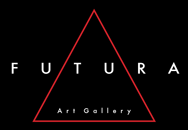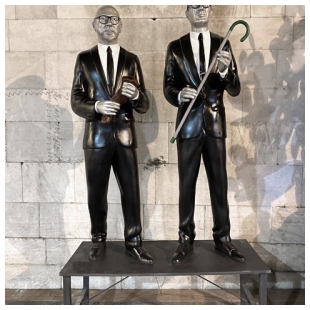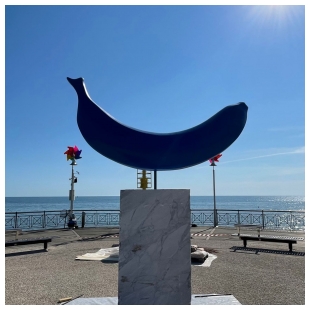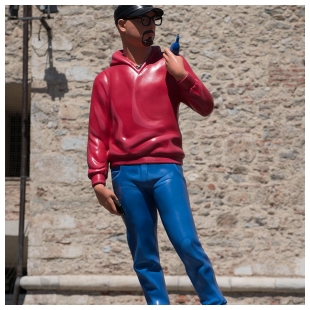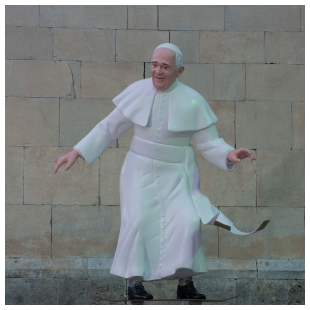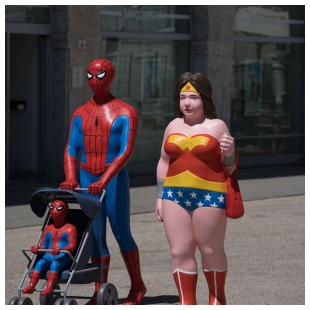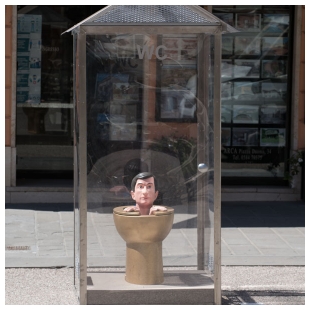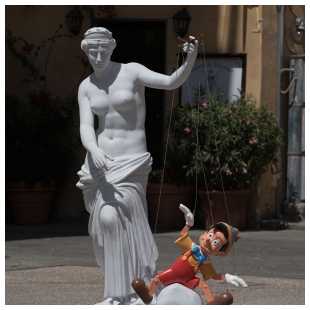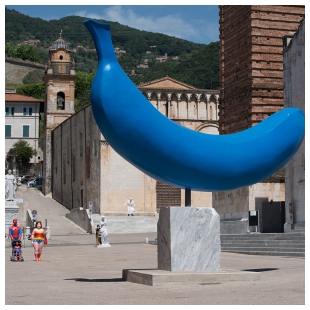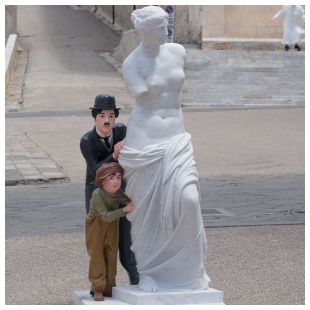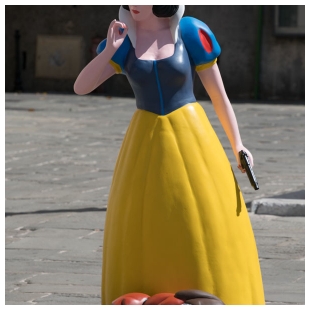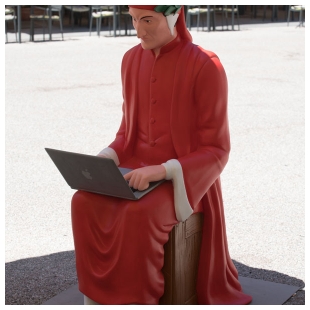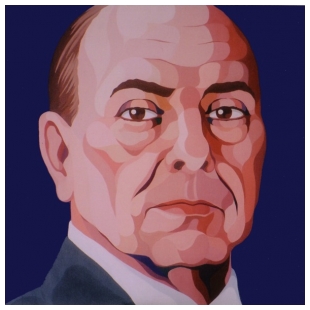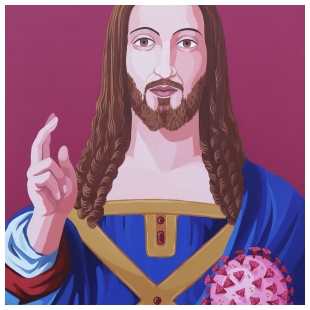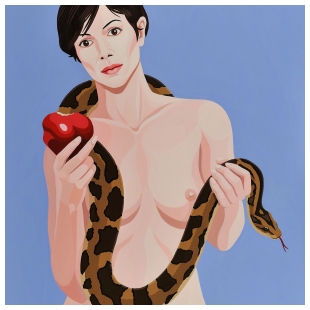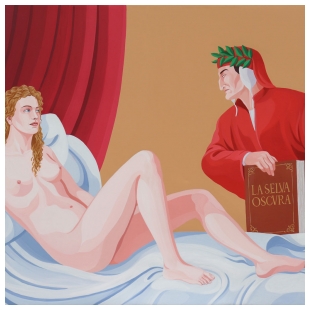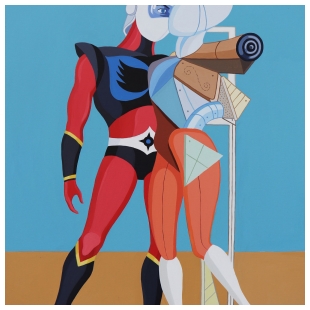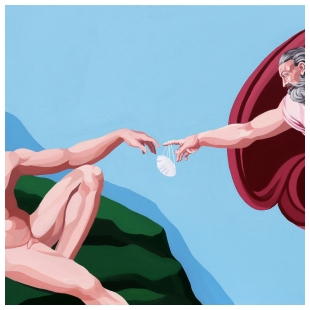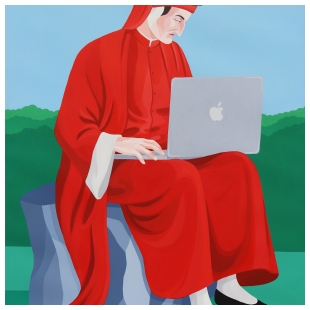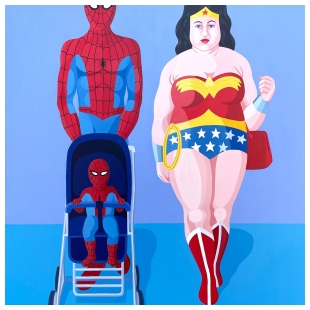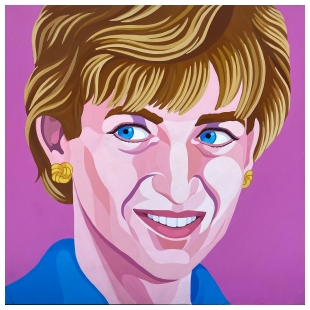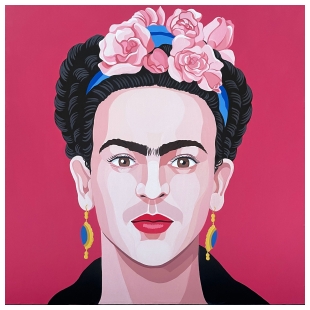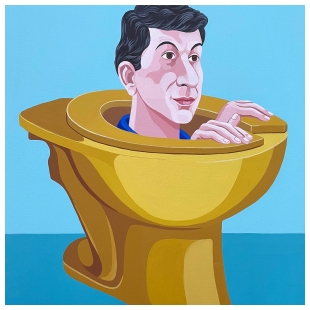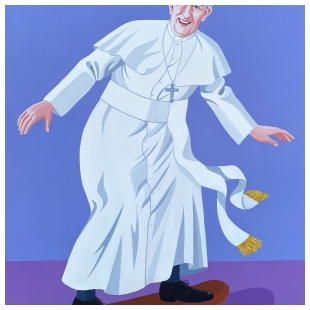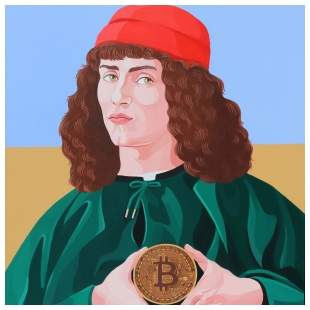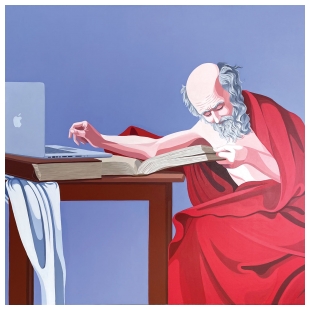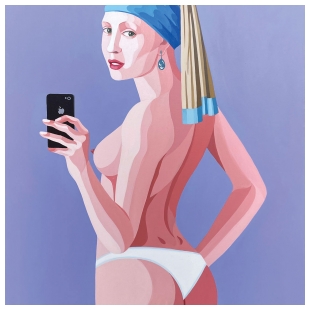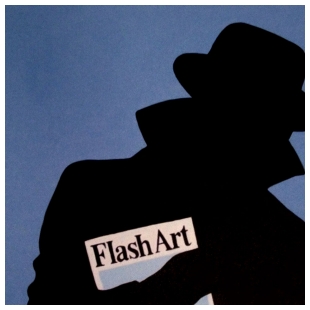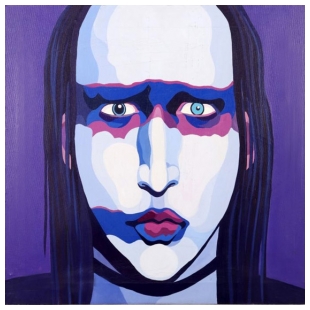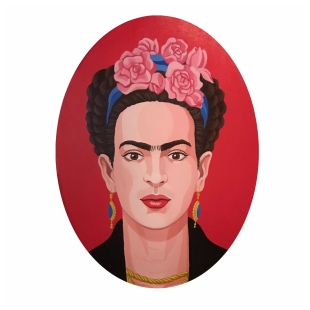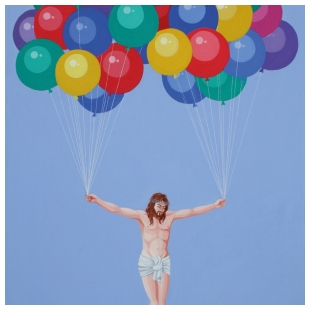Giuseppe Veneziano
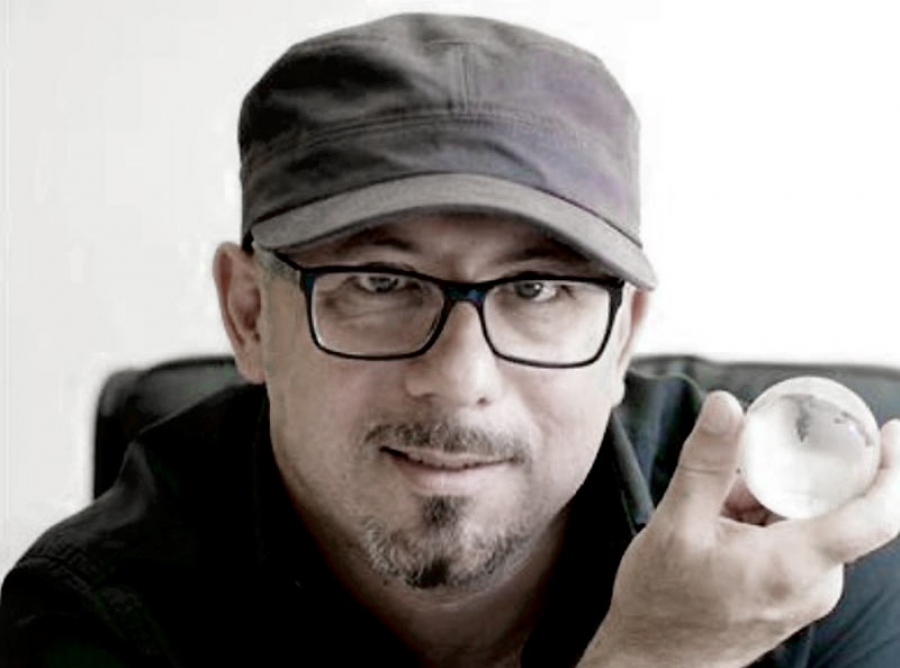
Giuseppe Veneziano è nato nel 1971 a Mazzarino. Vive a Riesi (CL) fino all'età di 18 anni. Si laurea in Architettura all'Università di Palermo nel 1996. L'anno successivo si trasferisce a Bologna e collabora con lo studio di architettura Glauco Gresleri. Nel 1998 ritorna a Riesi e apre uno studio di architettura. Parallelamente all'attività di architetto realizza vignette, illustrazioni e fumetti per alcuni quotidiani (Giornale di Sicilia, La Sicilia), per la rivista “Stilos” e per la Casa Editrice “Il capitello”.
Dal 2000 al 2002 è Docente di Storia dell'Arte e Direttore Didattico dell'Accademia di Belle Arti “Giorgio de Chirico” di Riesi.
Nel 2002 si trasferisce definitivamente a Milano per dedicarsi esclusivamente alla pittura e all'insegnamento.
La sua prima mostra risale al 2004 grazie alla conoscenza dello scrittore Andrea G. Pinketts che lo invita ad esporre presso il locale milanese “Le Trottoir”. Durante i giorni di preparazione della mostra, l'artista Maurizio Cattelan realizza la sua installazione dei bambini/fantoccio impiccati alla quercia antistante al locale. Giuseppe Veneziano inserisce come ultima opera della mostra, il ritratto di Cattelan con un cappio al collo e lo appende allo stesso ramo dell'albero dove pochi giorni prima l'artista padovano aveva realizzato la sua installazione. L'opera viene notata dai media che ne danno la notizia e dalla rivista di settore “Flash Art” che la pubblica in copertina.
Nel 2006 realizza, presso i locali della prestigiosa e storica galleria “Luciano Inga Pin", la mostra dal Titolo: “American Beauty”. Tra le opere esposte ce n'è una che ritrae la scrittrice Oriana Fallaci decapitata che desta subito scandalo. La mostra diventa oggetto di dibattito mediatico e intervengono personalità del calibro di Dario Fò, Oliviero Toscani, il Ministro Calderoli, Giulio Andreotti. Lucia Annunziata sulla “Stampa” e Renato Farina su “Libero” scrivono diversi editoriali. Tra i critici d'arte intervengono Philippe Daverio e Flavio Caroli. Anche la stessa scrittrice Oriana Fallaci scrive diversi articoli (su Libero e New Yorker) invitando i magistrati a inquisire il pittore per istigazione all'omicidio. La mostra viene presa di mira anche da alcuni blog americani come esempio di un sentimento anti-americano da parte dell'Europa.
Nel 2007 viene invitato alla VI Biennale di San Pietroburgo; nel 2008 rappresenta l’ltalia insieme ad altri venti artisti nella mostra “Artâthlos” in occasione dei XXXIX Giochi Olimpici di Pechino; nel 2009 partecipa alla IV Biennale d'arte di Praga.
Nel 2009 avvengono due episodi che riportano Veneziano sotto i riflettori dei media nazionali. Il primo riguarda un'opera dal titolo “Novecento” dove vengono ritratti alcuni protagonisti della politica del '900 come: Hitler, Stalin, Mussolini e Berlusconi, accoppiarsi con diverse eroine del fumetto e porno star. L'opera diventa d'attualità quando scoppiano gli scandali dei festini a sfondo sessuale nelle residenze del Presidente Berlusconi. La foto dell'opera viene, inoltre, pubblicata sulla copertina del libro di Paolo Guzzanti: "Mignottocrazia". L'altro episodio riguarda l'opera “La Madonna del Terzo Reich” esposta per la prima volta alla Fiera d'arte di Verona. Notata da alcuni giornalisti in anteprima dall'apertura della fiera, diventa notizia di cronaca su diversi quotidiani che gridano allo scandalo. Intervengono il Sindaco Flavio Tosi, il Vescovo e il Rabbino di Verona che ne chiedono l'immediata rimozione. Dopo la censura dell'opera Veneziano inscena una protesta, rivendicando la propria libertà d'espressione, proprio davanti la parete bianca dove prima era esposto il quadro. A sostegno dell'artista siciliano interviene lo scrittore Aldo Busi.
Risale al 2010 la prima mostra antologica di Giuseppe Veneziano dal titolo “Zeitgeist”. Il Comune di Pietrasanta ospita la mostra nei propri locali, ma prima della sua inaugurazione, avvengono diverse proteste da parte del parroco locale, del Vescovo di Lucca e dell'Arcivescovo di Pisa, per impedire l'esposizione dell'opera “La Madonna del Terzo Reich”. Il Sindaco decide di ritirare il patrocinio ma non di chiudere la mostra. Anche in questo caso la bagarre mediatica investe quasi tutti i mezzi di comunicazione. Nel dibattito intervengono Vittorio Sgarbi (che riproporrà la mostra a Salemi, dove allora era Sindaco), Giampiero Mughini, Andrea Pinketts. Moni Ovadia e i critici d'arte: Achille Bonito Oliva e Ivan Quaroni. La mostra ebbe un notevole successo, quasi 10.000 visite. Grazie alla mostra di Pietrasanta, l'artista siciliano viene notato dal gallerista Stefano Contini che gli propone di collaborare con la sua galleria.
Nel 2011 partecipa alla 54ª Biennale di Venezia.
Nel 2012 è invitato alla Biennale Italia-Cina. Nel 2014 realizza l'immagine di copertina e il booklet dell'album “McMao” dei Management del Dolore Post-Operatorio.
Dalla critica e dalle riviste di settore è riconosciuto come uno dei massimi esponenti della “New Pop italiana” e del gruppo “Italian Newbrow”
Giuseppe Veneziano was born in the town of Mazzarino (Caltanissetta, Sicily) on February 22, 1971 and lived in the municipality of Riesi (province of Caltanissetta) up to the age of 18. In 1996 he graduated from the University of Palermo with a degree in Architecture. While studying, he collaborated with several newspapers (The Giornale of Sicily, La Sicilia and Stilos) as a cartoonist and illustrator. In 1997 he moved to the city of Bologna which allowed him to collaborate with the Glauco Gresleri Architectural Studio. In 1998 he returned to Riesi where he opened his own studio. Alongside his activity as an architect, Veneziano also realized cartoons for several editing houses (Paruzzo Editors, Il Capitello Editor).
From 2000 to 2002 he held the position of Director of Didactics and Professor of Art History at the Giorgio de Chirico Academy of Fine Arts in Riesi. In the year 2002 he moved permanently to Milan to dedicate his energies exclusively to teaching and painting; he still today maintains his residence there.
The first time that the artwork of Giuseppe Veneziano was noticed dates back to 2004 during an exhibition entitled “In-Visi” curated by the writer Andrea G. Pinketts, and held at the Milanese pub Le Trottoir. Amongst the works displayed, a gigantic portrait of Osama Bin Laden. However the most debated work was the portrait of Maurizio Cattelan with a noose around his neck. Veneziano hung the work from the same tree where a month earlier the Paduan artist had hung three ragdoll children. Both portraits of Bin Laden and Maurizio Cattelan were published on the cover oF FLASH AR T magazine.
In 2006, Veneziano made headlines for himself during the exhibition “American Beauty” held at the prestigious and historic Milanese gallery, Luciano Inga Pin. One of the works presented was a painting that
depicted the decapitation of the illustrious writer Oriana Fallaci, entitled “Occidente, Occidente”. According to the artist, his intentions were meant to be a reflection on the atmosphere of fear that most of Europe was experiencing post-September 11th and after the terrorist attacks set off in Madrid and London. During the opening days of the exhibition, it was broadcast on both national and international news media and a debate was initiated in which Dario Fo, Nobel Prize winner; Roberto Calderoli, Italian Minister; photographer Oliviero Toscano; the journalists Lucia Annunziata (editorial, La Stampa) and Renato Farina (editorial; Libero) and well-known art critics Flavio Caroli and Philippe Daverio all intervened. Even an outraged Oriana Fallaci herself wrote several articles in The New Yorker magazine. Many American blog spots accused Europe of anti –American sentiments, using the Giuseppe Veneziano exhibition as an example. In 2007 the artist participated in the 6th edition of the St. Petersburg Biennale where he achieves an award.
In 2008 he is amongst 20 artists invited to represent Italy at the “Artâthlos” exhibiton held during the XXXIX Olympic games in Beijing, China. In 2009 once again a painting by the Sicilian artist entitled “Novecento” captured the interest of both the public and media. The work is a reflection on the rapport between sex and power. Several protagonists of 20th century political history (Hitler, Stalin, Mussolini, Berlusconi…) are mated with cartoon heroines and porno-stars. The work was christened “The Cavalier’s Orgy” by the press. In the foreground of the enormous painting, Berlusconi is pictured in bed with Cicciolina. The work was displayed two months before the scandal broke over the parties taking place at Berlusconi’s residences; it was also published on the cover of the book by Paolo Guzzanti, “Mignottocrazia” (best translates to “Bitchocracy” or “Whore-ocracy”). In that same year during the Verona Art Fair, the painting, “Madonna del Terzo Reich” (The Virgin Mary of the Third Reich), which represents a revised version of Raphael’s Madonna Cowper,holding baby Hitler in her arms. The work was censured and the name of the artist was once again in the spotlight of national and international media. The Mayor, the Bishop and the Rabbi of the Jewish community in Verona all requested that it be removed. After the censure, under the empty space where the painting had previously hung, Veneziano sparked a protest declaring his right to freedom of expression. The writer Aldo Busi intervened in support of the artist.
The painting was once again displayed during the anthological exhibition of Giuseppe Veneziano entitled “Zeitgeist”, held on July 2010 in Pietrasanta (Lucca). Also in this occasion, fierce protests were drawn from the local Parish priest. The municipality of Pietrasanta revoked its patronage even before the inauguration and imposed that images of the work were not to be diffused, although posters had already been put up. The Mayor of Pietrasanta disassociated himself from the exhibition, but did not close it notwithstanding continuous pressure from the Bishop of the town of Lucca. In all the churches of Lucca, the Archbiship of Pisa published a letter declaring a ban on the entire exhibition. In defense of the artist diverse intellectuals intervened amongst which were Vittorio Sgarbi, Giampiero Mughini, Andrea G. Pinketts, etc… The exhibition remained open to the public and was an enormous
success with over 10,000 visitors. During this period, the work was noted by gallery dealer Stefano Contini who purchased it as an addition to his prestigious personal collection. He also invited the artist to become part of his team of artists represented through the Contini galleries.
In 2011 Vittorio Sgarbi invited him to participate in the 54th edition of the Venice Biennale with an exhibition in the Italian Pavilion. In this highly esteemed location the artist exhibited the work, “Solitamente vesto Prada” (I Usually Wear Prada). The work was seen by stylists Dolce&Gabbana who commissioned two new works for their collection.
In 2012, Ivan Quaroni chose Veneziano amongst 60 Italian artists that participated in the Italy-China Biennale.
By critics and art magazines Veneziano is recognized as one of the maximum exponents of “Italian New Pop” and of the group “Italian Newbrow”.
